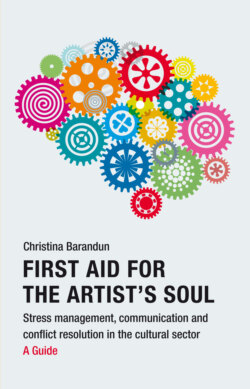Читать книгу First Aid for the Artist's Soul - Christina Barandun - Страница 13
На сайте Литреса книга снята с продажи.
Is Artistic Freedom Really Without Boundaries?
ОглавлениеAnother Get Out of Jail Free card that creative executives like to play is the much-touted concept of artistic freedom, according to the maxim: In the name of the artistic freedom, a conductor or director is allowed to get away with just about anything – throwing stands, attacking people verbally, giving free rein to their (usually negative) feelings. These central figures of a stage production can keep an entire establishment and its several hundred employees in suspense, or even in terror. Whether “stars” or not, artistic leaders are given a great deal of power under the banner of artistic freedom. And even if “artistic efforts based on collaboration” is set up as an ideal, in cases of doubt, it’s the star’s own artistic will that ultimately everyone be forced to follow. Because how would you dare to constrain the artistic process of a “genius”?
Two elements are mixed here, though – the stage work and the rehearsals, i. e. the creative process. What’s visible on the stage is one thing: the work itself should be artistically free, even though this freedom is necessarily restricted by various fundamental rights, such as the inviolability of the individual.
The creative process during rehearsals is quite a different matter. Artistic collaboration is clearly subject to the provisions of health and safety at work, and here the stipulation that the mental health of employees must not be put at risk applies. The work process and the protection of the physical and, above all, mental health of workers must not be undermined, even in artistic enterprises.
Of course, nobody should try to constrain the artistic process If you consider the day-to-day work that goes into development of a piece, you will see that this ‘artistic’ process is often anything but. At the end of the day, the making of theatre and opera is a craft, not only in terms of stage design and technology, but also in terms of the preparation of texts or scores. This craft requires clearly defined processes, time limits and soberminded instructions. If an artistic manager, for example a director, does not respect the need for these frameworks by demanding his ‘artistic freedom’, he will not, in the end, be able to do justice to the art. If information is provided too late or not at all, if at the last minute ideas are changed or an extensive redesign is demanded, the logistical effort and unnecessary pressure would overwhelm the staff, both on- and offstage, as well as the organisation as a whole.
Artistic managers must raise their awareness of their responsibility to their employees, who have the right and the opportunity to establish boundaries within the rigid time and organisational architecture of a theatre.
